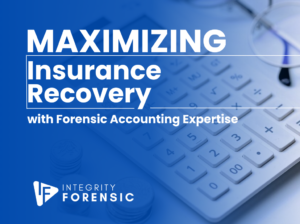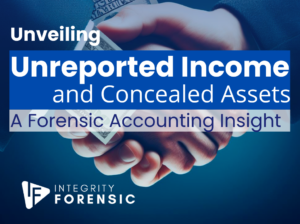In the world of financial crimes, skimming schemes remain a notorious challenge for investigators, often shrouded in a veil of complexity and secrecy. These devious acts occur before any money finds its way into a company’s accounting system, making them exceptionally hard to detect, investigate, and ultimately prove. This article offers a comprehensive look into the world of skimming schemes, with insights from a forensic accounting perspective.
Skimming Schemes: The Silent Thief
Skimming schemes take place at the very point of entry of money into a business, where the gatekeeper responsible for handling these funds becomes the prime suspect. Individuals in roles such as bank tellers, waitstaff, store cashiers, salespersons, or medical billing clerks are often the culprits, as they have direct access to incoming funds. Although numerous jobs offer opportunities for skimming, these common examples highlight the ease of theft and the daunting challenge investigators face in these cases.
The Simple Complexity of Skimming
Consider a scenario where a waiter or waitress takes an order from a customer, including an appetizer, a meal, and a beverage. The customer receives all the items, pays for them, but the server intentionally omits the appetizer from the cash register, pocketing the money instead. This simple example illustrates how seamlessly a skimming scheme can be carried out.
However, the level of ease depends on the establishment’s control systems. In restaurants with computerized systems and rigorous oversight, such thefts are less likely to occur. Management can implement strict controls, like not allowing food to be prepared unless it’s entered into the computer system. But in establishments without such controls, skimming remains an impending threat. The main challenge is proof; how can management demonstrate such theft, barring catching the employee in the act?
Detecting Skimming in Retail Environments
In a retail environment, forensic accountants look for signs of skimming by scrutinizing cash register data. They might identify excessive voided transactions or no-sale entries, which can serve as red flags. While some of these transactions may be legitimate, they can also be used to deceive customers into believing a sale has been registered. By comparing these transactions across employees and shifts, investigators can identify unusually high rates, raising suspicion.
Office Settings and the Elusiveness of Skimming
In an office setting, skimming can be more challenging to detect. For instance, a customer pays cash at a phone company’s window without requesting a receipt. The cashier can easily pocket the money without recording the transaction, leading to potential theft. However, this creates a dilemma – when the customer’s account isn’t adjusted, disputes will likely arise. The absence of a receipt and documentation complicates any investigation.
This situation underscores the importance of segregating duties to prevent fraud in the workplace. By separating the processes of receiving payments and recording them in the accounting system, the likelihood of theft significantly decreases. While a cashier may steal a payment, they won’t have the ability to manipulate the account records to cover it up.
Preventing and Detecting Skimming Schemes
Preventing skimming schemes is crucial because proving them is notoriously difficult. Companies should rely heavily on preventive controls. Employees who believe they are under constant surveillance are less likely to engage in theft. Effective tools to combat skimming include:
- Video Surveillance: Monitoring employee activities can deter theft.
- Active Management Involvement: Managers actively supervising employees can prevent skimming.
- Customer Involvement: Alerting customers to the company’s receipt policy can help detect theft.
- Segregation of Duties: Eliminating opportunities to cover theft by separating financial processes.
- Surprise Audits: Random audits can discourage fraud by instilling fear in potential culprits.
Investigating Skimming Cases
Investigating skimming cases is indeed a daunting task due to the scarcity of evidence. To uncover such schemes, investigators may:
- Check for Altered Documentation: Look for discrepancies in records and documents.
- Examine Accounts: Analyze high-volume, low balance accounts for irregular entries.
- Accounts Receivable Aging Reports: Identify anomalies by reviewing aging reports.
- Trend Analysis: Identify patterns that might reveal suspicious activity, such as increasing write-offs or unusually high discounts.
- Audit Software: Utilize specialized software to quickly analyze thousands of records for irregularities in entries or balances.
In conclusion, skimming schemes present a unique challenge to investigators due to their clandestine nature. By implementing robust preventive controls and utilizing advanced investigative techniques, businesses can protect themselves from potential financial losses. Understanding the intricacies of skimming schemes is a vital step toward safeguarding your company’s assets and financial integrity.
At Integrity Forensic, our team comprises seasoned forensic accountants ready to provide you with expert assistance. Contact us today for a complimentary consultation by calling 855-673-9999 or sending us a message at questions@integrityforensic.com.





